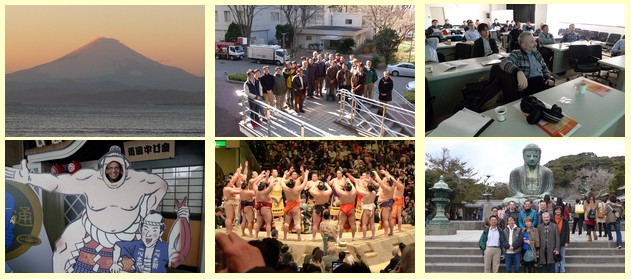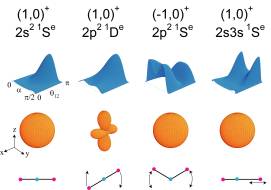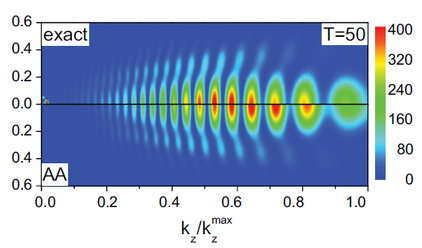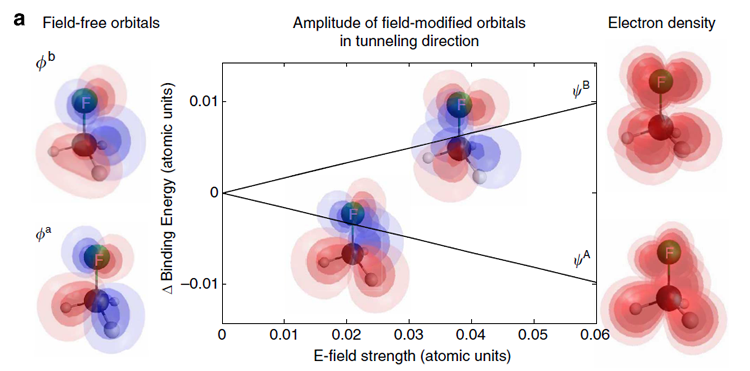June 2015 Issue
Topics
Theoretical atomic, molecular, and optical physics: Insights into light-matter interaction on the atomic scale
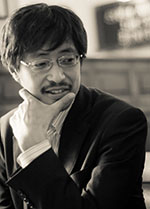
Toru Morishita
Associate Professor
Department of Engineering Science
University of Electro-Communications, Tokyo
The beautiful colors of the rainbow are an everyday example of the results of light interacting with matter--sunlight with raindrops. Similar examples of light interacting with materials includes spectra produced by prisms and the deep orange and red hues of sunsets. The physics of these macroscopic light-matter interactions is well understood in terms of classical theories of the wave nature of light. But the interaction of ultrashort intense laser pulses with atoms and molecules such as hydrogen, helium, and carbon oxide is a new area of active research.
Toru Morishita, is a theoretician at UEC, who is collaborating with groups in Russia, Taiwan, Denmark, Switzerland, US, China, Vietnam, and Japan, is addressing these questions. "My research covers atomic and molecular dynamics under intense laser fields, ultrafast imaging of atomic and molecular dynamics in the attosecond (10-18 s) regime, and controlling correlated motions of electrons in atoms and molecules," explains Morishita. "It's of fundamental physics. Hopefully our findings are going to add pages to text books."
Indeed, the implications of atomic, molecular, and optical physics and chemistry have been recognized by the award of four Nobel Prizes in the last two decades: 1997, "development of methods to cool and trap atoms with laser light"; 1999, "transition states of chemical reactions using femtosecond spectroscopy"; 2001, "achievement of Bose-Einstein condensation in dilute gases of alkali atoms, and for early fundamental studies of the properties of the condensates"; 2005, "development of laser-based precision spectroscopy, including the optical frequency comb technique".
Morishita holds a regular series of international workshops "on the theory for attosecond quantum dynamics" (IWTAQD) at UEC [1]. "Our discussions during the workshops have led to the publications of many joint papers," says Morishita. "Papers that would most likely not have been possible if we had not met at the meeting. Such meetings are important for the advancement of science."
As Morishita empathizes, this area of research is focused on gaining deeper understanding of atomic and molecular dynamics by theoretical explanations for experimental observations. But there are also practical applications, including controlling chemical reactions, and ultrafast imaging of electronic structure in a single molecule.
Recent research highlights
- Theoretical study of the "two-electron dynamics in nonlinear double excitation of helium by intense ultrashort extreme-ultraviolet pulses" [2]. This research identified the mechanism governing the experimentally observed enhancement of three-photon absorption induced by two-electron irradiation. These findings are expected to find applications for determining the structure of proteins and the mechanisms underlying the action of drugs at the atomic scale.
- Pulsed femtosecond (10-15 s) intense lasers are widely used to study structure and electron dynamics of molecules. Surprisingly, the effect of the lasers on the electronic structures of samples during measurements is not well understood. Morishita and colleagues have been developing new theories [3], and addressed this issue by experimentally measuring the effect of powerful lasers on the structure of methyl fluoride and methyl bromide-general examples of so-called orientated polyatomic molecules. The laser caused substantial changes in the electronic structure of the molecules in the attosecond (10-18 s) time scale. The findings shed light on the complexities of strong-field attosecond spectroscopies [4].
References and further information
- [1] International workshop on theory for attosecond quantum dynamics (IWTAQD) 2015:
http://power1.pc.uec.ac.jp/~toru/iwtaqd/iwtaqd13.html - [2] Two-electron dynamics in nonlinear double excitation of helium by intense ultrashort extreme-ultraviolet pulses
Chien-Nan Liu, Akiyoshi Hishikawa, and Toru Morishita
Phys. Rev. A 86, 053426 - Published 30 November 2012 - [3] Adiabatic theory of ionization by intense laser pulses: Finite-range potentials
Oleg I. Tolstikhin and Toru Morishita,
Phys. Rev. A 86, 043107 - Published 11 October 2012 - [4] Observation of laser-induced electronic structure in oriented polyatomic molecules
P. M. Kraus, O. I. Tolstikhin, D. Baykusheva, A. Rupenyan, J. Schneider, C. Z. Bisgaard, T. Morishita, F. Jensen, L. B. Madsen, and H. J. Wörner.
Nature Communications 6, Article number: 7039 doi:10.1038/ncomms8039
Published 05 May 2015
